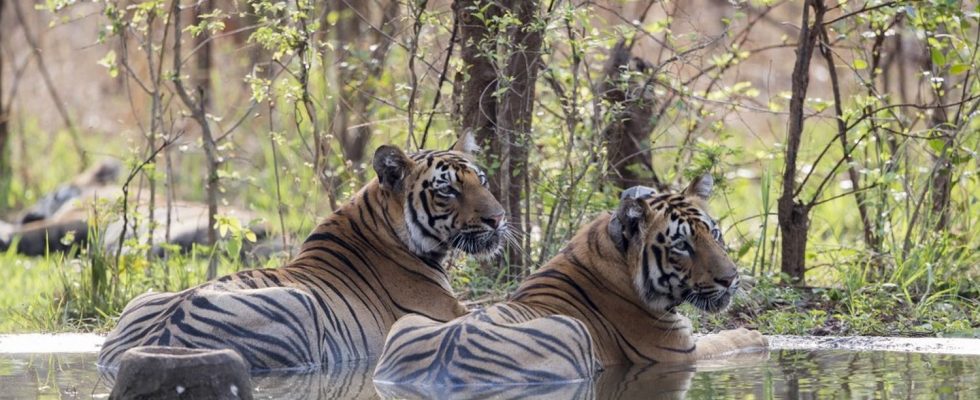India now hosts 75% of the tigers present in the world and asserts itself as the largest host country for these felines.
Article written by
Published
Update
Reading time : 1 min.

An increase that rewards years of efforts to protect endangered species. The population of wild tigers in India, by far the largest in the world, has exceeded 3,000 individuals, according to an official census published on Sunday April 9. The Indian authorities have thus counted 3,167 tigers in the wild, against 2,967 in the last report carried out four years ago (an increase of 6.74%).
When the census was announced, the Indian Prime Minister, Narendra Modi, spoke of a “moment of pride”. “Our family is growing”he said at a ceremony in the southern city of Mysore. “It is an achievement not only for India, but also for the whole world”. India now hosts 75% of the world’s tigers and asserts itself as the largest host country in terms of area, he added.
A decrease due to deforestation and poaching
Censuses are made every four years using cameras and computer systems to identify each individual. However, the rate of increase has slowed. It is established at less than 7% over this last period (2018-2022), against more than 30% during the previous period studied (2014-2018).
A century ago, the largest cats were present in Central, East and South Asia. But its population has been reduced by more than 93% in the past 100 years and it is now present in only 13 countries, according to the International Union for Conservation of Nature (IUCN).
In 1900, more than 100,000 tigers roamed the planet. But this number fell to 3,200 in 2010, when India and twelve other tiger host countries signed an agreement to double their population by 2022. The cause: deforestation, intrusion humans in their natural habitat and poaching.
